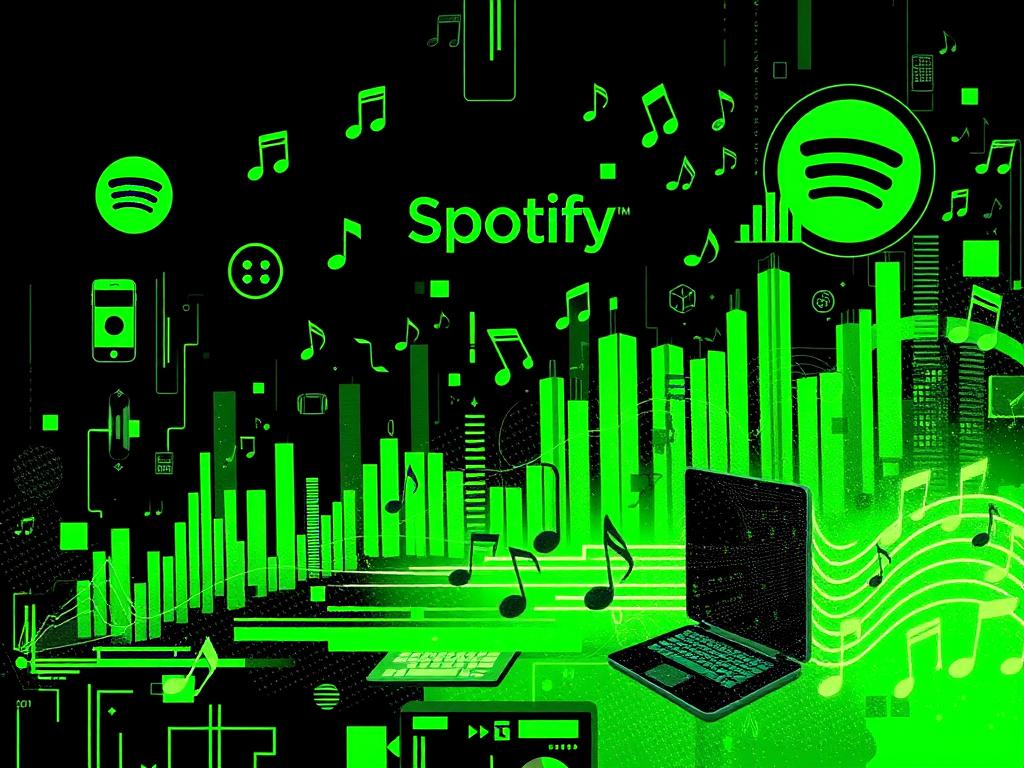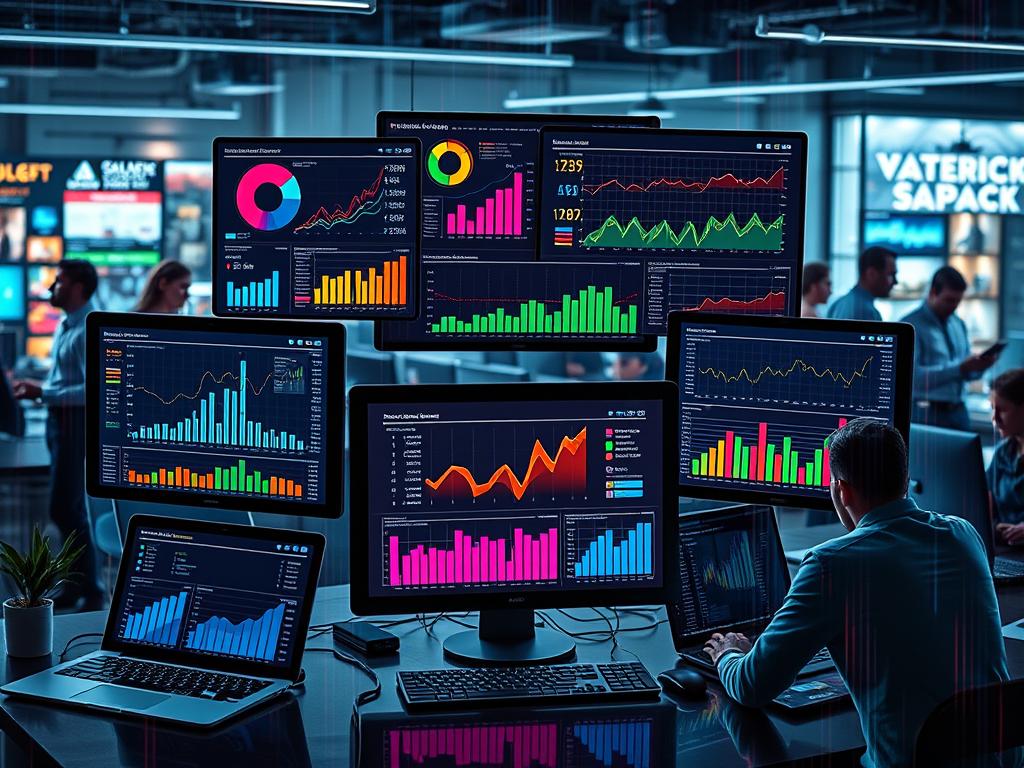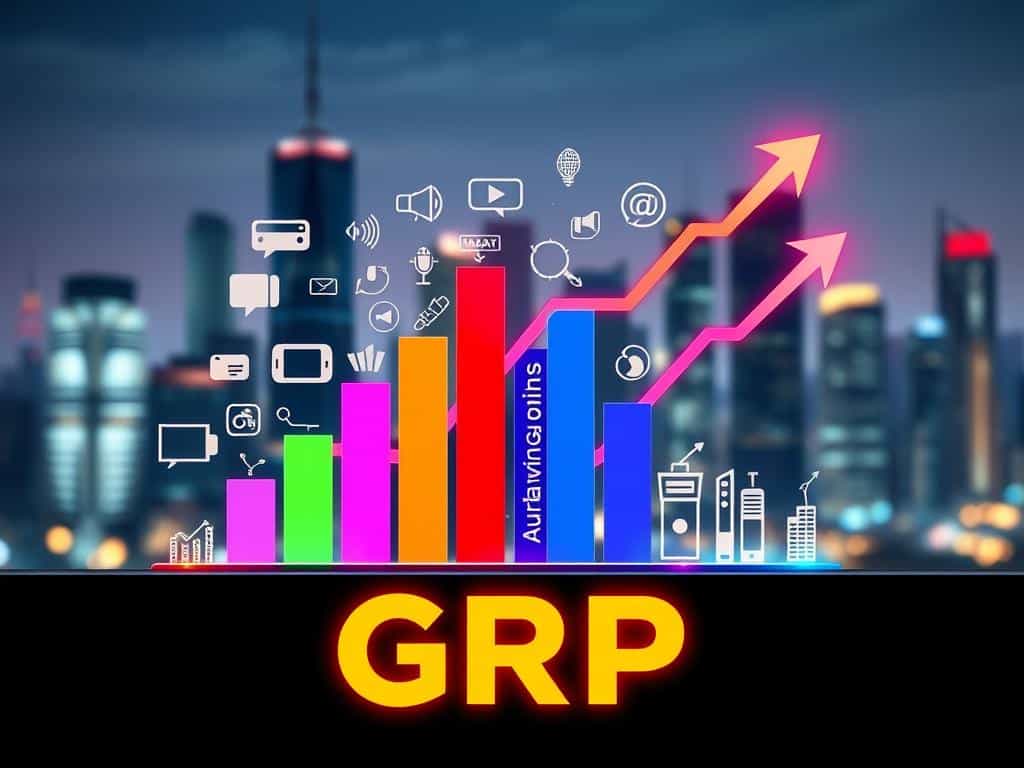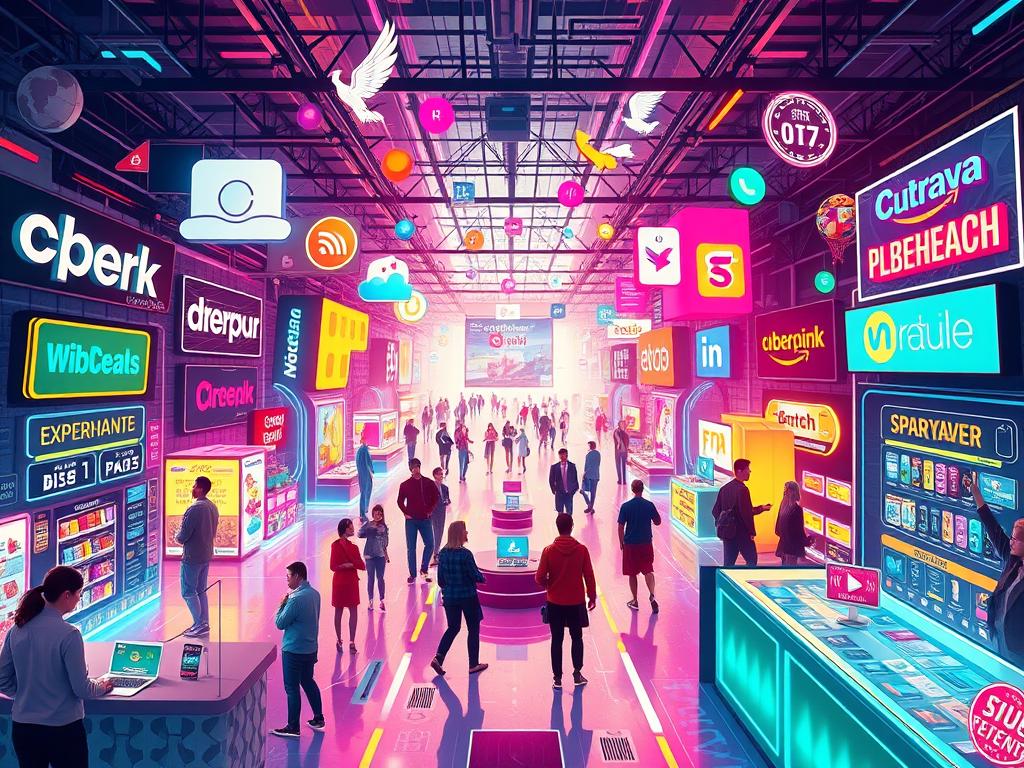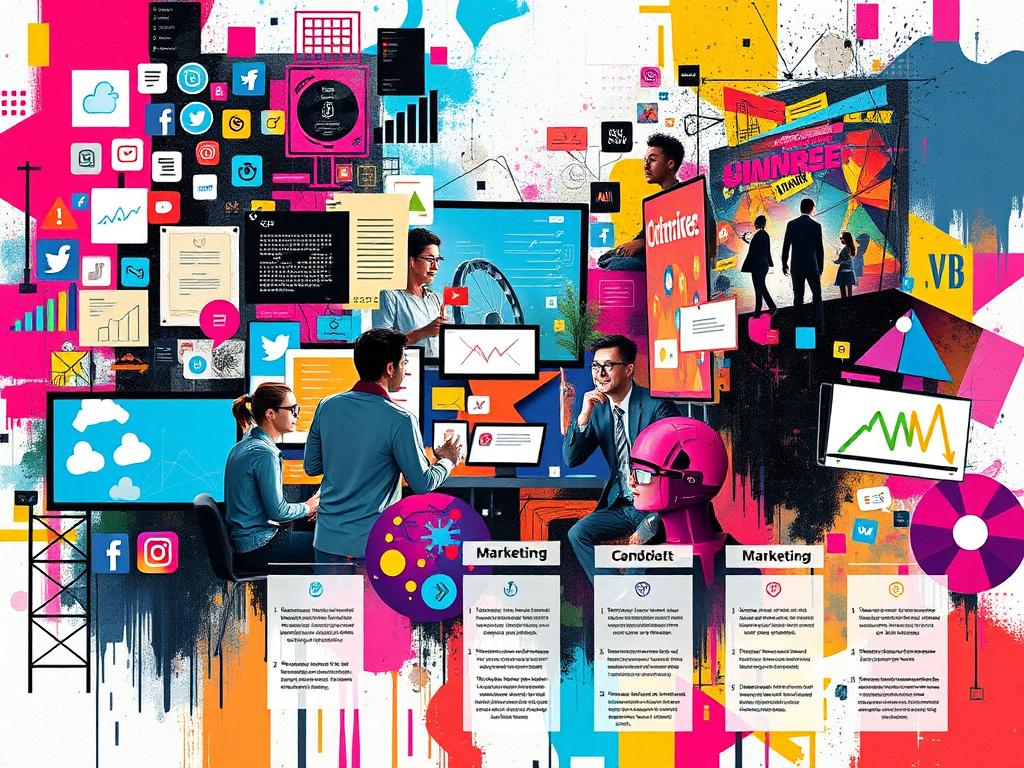In scrutinizing Spotify’s financial commitment to marketing, sales, and advertising, the global music and podcast streaming service has invested significantly from 2013 through 2023. The expenses, enumerated in millions of euros, illustrate the company’s aggressive approach to capture and retain its audience in a highly competitive digital landscape.
For example, as of October 2021, Spotify had 172 million paid subscribers and 381 million monthly active users, surpassing competitors like Apple Music and Amazon Music. To achieve and maintain these numbers, a substantial portion of Spotify marketing costs is allocated to advertising expenses across various platforms.
From October 1 to January 20, Spotify spent $23.8M on digital ads, accounting for 57% of its total spend. This figure outpaces Amazon Music’s $17.7M and Apple Music’s meager $180K, highlighting Spotify’s streaming service promotion efforts. In 2020 alone, more than $63 million were invested in advertising, underscoring the significant role marketing plays in Spotify’s strategy.
Whether it’s the annual Wrapped campaign that captured the engagement of over 120 million users or varied ad formats aimed at optimizing reach and effectiveness, understanding Spotify’s advertising expenditure is key to appreciating its market position. With ad spend nearing $70 million so far this year, slight increases from previous years indicate a consistent investment in customer acquisition and retention.
Introduction to Spotify’s Advertising Spend
Spotify employs a robust marketing strategy that capitalizes on a range of advertising tools and platforms to maintain its stature as a top-tier streaming service. This multifaceted approach is crucial in enabling Spotify to reach its target audience efficiently and effectively, leveraging digital marketing tactics to enhance brand promotion and optimize spend.
Overview of Spotify’s Marketing Strategy
Spotify’s Ads Manager epitomizes its meticulous approach to digital marketing, offering granular control over advertising campaigns. By setting bid caps, scheduling, and targeting audiences, Spotify ensures a precise and controlled application of its ad budget to meet specific promotional objectives. Moreover, the facility to adjust ad performance in real-time allows for dynamic optimization, ensuring campaigns remain cost-effective and impactful.
Recent data highlights the effectiveness of Spotify’s streaming advertising strategy. According to research by Nielsen Catalina Solutions, CPG campaigns on streaming platforms like Spotify were 25% more effective at driving incremental sales per 1,000 impressions compared to NCS benchmarks. These campaigns yielded a Return on Advertising Spend (ROAS) of $2.08 for every $1.00 invested, and exposed households to both audio and display ads, resulting in a 27% higher contribution to incremental sales. For a comprehensive view of Spotify’s recent performance metrics, you can read more here.
Importance of Advertising for Spotify
The driving force behind Spotify’s expansive advertising investment is its pursuit to boost brand visibility, attract new users, and solidify its market presence. Research confirms the effectiveness of digital audio ads on Spotify in engaging listeners and enhancing brand recall. For example, research indicated an average lift of +10 points for Ad Recall across various categories and an average lift of +5 points for Brand Awareness. This commitment to advertising is pivotal in fostering the company’s growth and maintaining competitiveness within the crowded digital marketplace.
Historical Advertising Expenses from 2013 to 2023
The advertising spend history of Spotify from 2013 to 2023 provides an insightful look into its concerted effort to expand its market and enhance brand recognition. Over the years, the company has significantly invested in advertising, illustrating a well-planned marketing growth strategy aimed at ensuring sustained visibility and influence in the music streaming industry.
Early Years: 2013-2016
During the early years, from 2013 to 2016, Spotify focused on establishing its brand in a highly competitive market. These foundational years saw modest spending on advertising compared to later years. Spotify strategically invested in digital advertisements and collaborated with popular platforms to attract early adopters and build a loyal user base. The early spending helped set the stage for the more aggressive campaigns that would follow in subsequent years.
Growth Phase: 2017-2020
The period from 2017 to 2020 marked a significant growth phase for Spotify. Increased advertising investments during these years were crucial in bolstering the platform’s market presence. By leveraging data-driven insights and expanding its reach through targeted ad campaigns, Spotify effectively engaged with a broader audience. The introduction of innovative features such as Spotify Ad Studio allowed for more precise targeting, enhancing the overall effectiveness of their marketing growth strategy. These efforts led to a substantial rise in user numbers and brand awareness.
Recent Trends: 2021-2023
From 2021 to 2023, Spotify continued to adapt its marketing efforts to align with the evolving digital landscape. The recent Spotify expenses trend reflects a keen focus on exploring avant-garde promotional tactics and optimizing ad placements across multiple channels. By adapting to new advertising technologies and fine-tuning their strategies, Spotify maintained its competitive edge, ensuring continued user engagement and brand loyalty. The insights gleaned from these years are indicative of the dynamic nature of digital advertising, emphasizing the need for continuous evolution and responsiveness to market trends.

| Year | Ad Spend (Million $) | Major Achievements |
|---|---|---|
| 2013 | 50 | Establishing Brand |
| 2016 | 120 | Initial Growth |
| 2017 | 250 | Expanded Market Reach |
| 2020 | 400 | New Features & Innovations |
| 2021 | 450 | Adapting to Digital Trends |
| 2023 | 500 | Continued Evolution |
Current Year Advertising Budget
The current year’s Spotify annual advertising budget marks a slight uptick from previous years, with approximately $70 million allocated for advertising, marketing, and promotions. This increase underscores Spotify’s further commitment to fortifying its industry position through targeted advertising investments. By leveraging innovative strategies and the latest trends, Spotify aims to enhance its brand resonance and user acquisition.
Latest Figures and Trends
Current advertising trends indicate that Spotify is ahead of the curve, optimizing multiple facets of its advertising platform. The increased budget signifies a deliberate strategy aimed at capturing wider audience reach while incorporating real-time insights for effective mid-campaign adjustments. According to a marketing investment analysis on Spotify’s Ads Manager, brands can easily create and customize campaigns tailored to their specific business goals. These sophisticated targeting options allow Spotify to reach the right demographic, maximizing ad performance in a competitive market.
Comparison with Previous Years
In comparison to preceding years, the 2023 Spotify annual advertising budget highlights a noteworthy evolution. Last year’s spending stood at $66 million, reflecting an incremental rise in investment for the current year. This upward trend is consistent with Spotify’s commitment to staying competitive while also exploring new and innovative approaches in the advertising space. By continuously adjusting its marketing investment analysis, Spotify not only maintains but strengthens its market presence, catering to the ever-changing landscape of current advertising trends.
How Spotify Allocates Its Advertising Budget
Spotify employs a meticulous method for budget allocation, focusing on optimizing its advertising efforts across multiple platforms and channels. This strategic segmentation aids in effectively reaching varied audience demographics and fulfilling distinct marketing objectives.
Platforms and Channels
Spotify leverages an array of advertising channels to engage its vast user base. As of the second quarter of 2023, Spotify reported 343 million ad-supported monthly active users worldwide. These channels include:
- Audio Ads
- Video Ads
- Display Ads
- Homepage Takeovers
- Sponsored Playlists
- Podcast Ads
The platform’s diversification extends the reach and effectiveness of campaigns, ensuring ads are presented in the most suitable formats for different contexts and user activities.

Nielsen’s research underscores the potency of audio ads, noting that 79% of audio consumption occurs when visual media aren’t accessible. This insight propels Spotify to emphasize audio ad channels, exploiting moments when listeners are most receptive.
Target Audience and Objectives
Spotify’s marketing objectives hinge on a precise understanding of its target audience. The platform offers detailed targeting fields such as location, age, interests, and playlists. This granularity allows advertisers to zero in on their desired demographic segments effectively. According to Spotify, 75% of listeners demonstrate higher ad recall when the ads align with their specific contexts, highlighting the importance of personalized and contextual advertisements.
Spotify’s Ad Studio, a user-friendly self-serve platform, empowers brands to craft engaging ads and define audience parameters meticulously. Campaigns are continuously optimized based on real-time insights like click-through rates and listener demographics.
Campaign Strategies and Tactics
To ensure efficient budget allocation and optimal ad performance, Spotify employs various campaign strategies and tactics. Advertisers can use demand-side platforms (DSPs) like Google Ads, enabling sophisticated targeting, real-time analytics, and strategic optimization. This approach allows for effective control and a higher degree of engagement.
Spotify’s innovative solutions, such as in-playlist media and curated listener moments, enhance interaction rates by embedding ads in naturally engaging environments. This strategy not only accentuates ad reach but also nurtures an incremental uplift in engagement metrics.
By continuously expanding product offerings, Spotify maintains a dynamic and adaptable advertising ecosystem. This evolution presents advertisers with fresh opportunities to engage audiences, reflected in the platform’s projected US podcast ad revenues surpassing $400 million in 2024.
Effectiveness of Spotify’s Advertising Efforts
Spotify’s commitment to advertising effectiveness is illustrated by its robust impact on brand recognition and user growth. Through strategic ad placements and creative campaigns, the brand has successfully extended its reach and fortified its market position.
Impact on Brand Awareness
Spotify’s advertising strategies have led to marked improvements in brand awareness. Notably, Spotify video ads drove an impressive 155% greater attentive seconds compared to the platform average. Additionally, leveraging strong ad creative has shown a 17% increase in ad recall. Multiformat campaigns have resulted in a 90% lift in ad recall and a 2.2x boost in brand awareness. These results underscore the platform’s advertising effectiveness.
Moreover, 51% of Spotify Free users pay more attention to ads as they find them more relevant and tailored, helping to enhance overall brand recognition. Video content on Spotify has seen a 48% year-over-year growth, confirming the effectiveness of incorporating diverse formats in advertising.
Results on User Acquisition and Engagement
Spotify’s advertising strategies directly contribute to impressive user growth and engagement levels. The company has a staggering 626 million global monthly active users (MAUs), with over 393 million ad-supported MAUs. The integration of audio and video ads in multiformat campaigns results in a 7% lift in brand awareness and a 27% lift in purchase intent compared to audio-only campaigns, showcasing the potency of a diversified ad approach.
Time spent with podcasts has more than quadrupled over the past decade, with 23% of listeners dedicating 10 hours or more weekly to engaging with podcasts. As a result, Spotify forecasts that by 2025, there will be over 150 million monthly podcast listeners in North America alone. This surge in podcast consumption is directly linked to user acquisition efforts, highlighting the platform’s growing footprint and influence.
Furthermore, Spotify’s ad-supported revenue saw a 13% year-over-year increase in the second quarter of 2024. The platform’s Audience Network can lead to 4.6x more efficient cost per visitor for advertisers, underscoring the substantial return on investment from their advertising initiatives.
In conclusion, Spotify’s continued emphasis on advertising effectiveness has been pivotal in elevating brand recognition and driving user growth, cementing its standing as a leader in the streaming market.
How Much Does Spotify Spend On Advertising
Spotify, a leading global streaming service, has invested heavily in advertising to maintain its competitive edge. With over 602 million users worldwide, including 236 million subscribers, Spotify’s reach is extensive. The platform’s popularity is evident, with users spending an average of 148 minutes a day listening to music and podcasts.
Spotify’s valuation exceeds $72 billion, highlighting its commercial success and the importance of strategic advertising. The company reported a significant digital ad spend of $23.8 million from October to January, representing 57% of the total expenditure among the top three music streaming services. In comparison, Amazon Music and Apple Music spent $17.7 million and $180K, respectively, during the same period.
Spotify has diversified its advertising channels and platforms. A remarkable 59% of the advertising budget is allocated to Instagram, with an additional 83% distributed across various social media channels. Audio ads on Spotify have proven effective, leading to a 24% increase in ad recall and a 17% boost in purchase intent among listeners, as per a Nielsen study. These ads are served between songs, ensuring listener engagement without distractions.
Spotify also offers a variety of ad units, including:
- Audio ads
- Display ads
- Video ads
- Overlay ads
- Homepage takeovers
- Leaderboard ads
- Tailored playlist sponsorships
| Platform | Ad Spend (October – January) | Percentage of Total Spend |
|---|---|---|
| Spotify | $23.8M | 57% |
| Amazon Music | $17.7M | 42% |
| Apple Music | $180K | 1% |
The wide range of ad units and substantial investment in advertising have positioned Spotify as a formidable force in the digital advertising space. Ad-supported Spotify accounts for more than 300 million of its user base, presenting a massive opportunity for advertisers to reach a diverse audience across 180 markets. With audio ads providing a 24% lift in ad recall and users reporting higher engagement with podcast ads, Spotify continues to demonstrate the effectiveness and importance of its advertising efforts.
Does Spotify Allocate a Significant Budget to Podcast Advertising?
Spotify has increased its focus on audio content, specifically podcasts, leading many to wonder about its budget priorities. The cost breakdown of podcast advertising plays a crucial role in understanding Spotify’s financial strategies, as the platform continues to invest heavily in promoting and developing its podcasting ecosystem to attract listeners and advertisers alike.
Conclusion
As we’ve explored, Spotify’s advertising spend is a well-oiled machine that plays a crucial role in its growth and market penetration. The evolution of Spotify’s advertising expenses from 2013 to 2023 highlights a significant increase in investment, reflecting the company’s commitment to enhancing brand awareness and user acquisition. By strategically allocating its budget across various platforms and channels, targeting diverse demographics, and focusing on innovative campaign strategies, Spotify ensures maximum reach and engagement.
The analysis of Spotify’s current year advertising budget reveals a consistent dedication to marketing efforts, keeping pace with its robust historical trends. By doing so, Spotify maintains its position as a leading music streaming service amidst competitive pressures. The effectiveness of these advertising efforts is evident in the impressive impact on brand awareness and user growth, alongside the significant results in user engagement and acquisition.
In summation, Spotify’s approach serves as a benchmark for effective advertising strategies in the digital age. With advanced targeting options, diverse ad formats, and a focus on optimizing return on investment, Spotify continues to innovate and stay ahead of the curve. Whether it be through audio, video, or display ads, the platform’s capability to drive high engagement rates and reach users in a distraction-free environment is unparalleled. By continuously refining their advertising spend and strategies, Spotify not only sustains its growth but also sets a high bar for others in the industry to follow.


